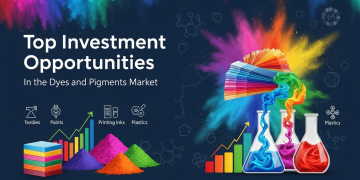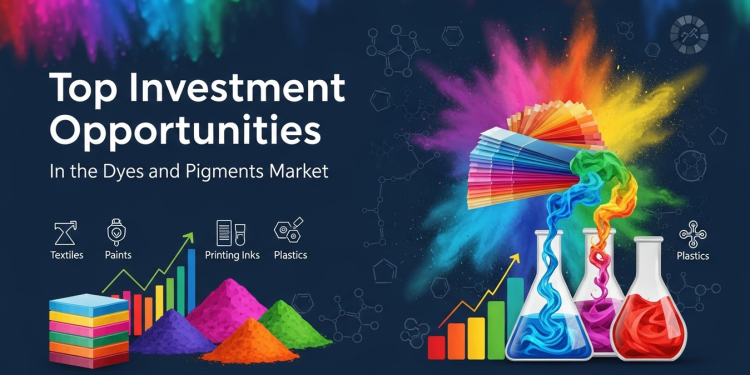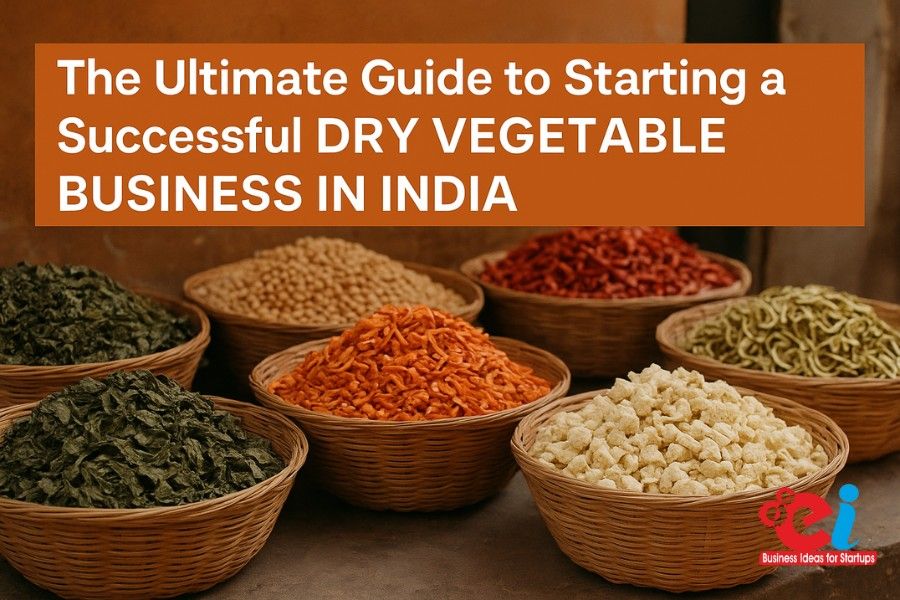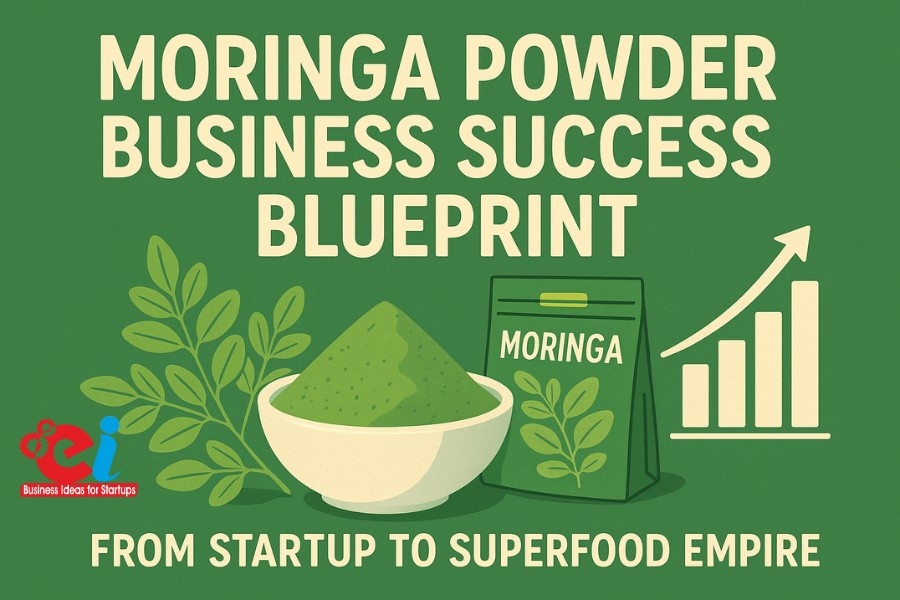Worldwide, the dyestuff and pigments business or industry is a key component in areas such as textiles, leather, and plastics, as well as in paints and coatings, available printing inks, and the paper industry. Being one of the biggest manufacturers and exporters of dyestuff, India contributes around 16% of the world’s supply, over 4 billion dollars of dyestuffs every year. Anticipate sustainable and onward growth as sectors like textiles, packaging, and construction abroad demand more pigments and dyes. With the trends now more toward organic dyes and pigments, there is a lucrative market for new entrepreneurs.
This article discusses industrial feasibility, market opportunities, and potential for startups around different innovative ideas in the manufacturing sector.
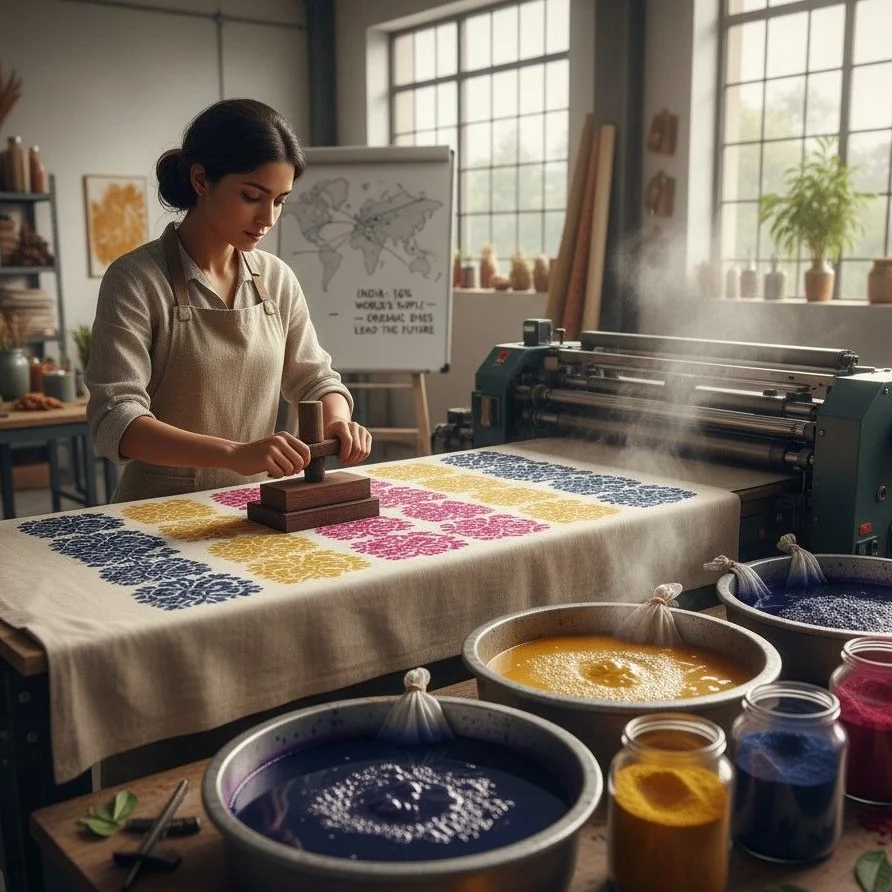
Top 25 profitable product-based manufacturing business ideas
1. Reactive Dyes
Reactive Dyes are a useful majorly used in textiles, engaged in business in plastic, coating, ink, and disposable items, and even for consumer goods. All of these areas demonstrate business potential and growth available to dyestuff and pigment entrepreneurs.
2. Acid Dyes
Acid Dyes can be a successful business within the dyestuff and pigments sector. Acid dyes have lots of possible uses as a value-added specialty chemical in textiles, plastics, coatings, inks, and consumer products. There are lots of entrepreneurial opportunities associated with sustainable and exported acid dyes.
3. Basic Dyes
Basic Dyes can be a successful business within the dyestuff and pigments sector. Basic dyes have lots of possible uses as value-added specialty chemicals in textiles, plastics, coatings, inks, and consumer products. There are lots of entrepreneurial opportunities associated with sustainable and exported basic dyes.
4. Direct Dyes
Direct Dyes can be a successful business within the dyestuff and pigments sector. Direct dyes have lots of possible uses as a value-added specialty chemical in textiles, plastics, coatings, inks, and consumer products. There are lots of entrepreneurial opportunities associated with sustainable and exported direct dyes.
5. Vat Dyes
Some can argue that Vat Dyes seem very profitable. The reason for that is the application of dyes in textiles, plastics, coatings, inks, and consumer goods. Certainly, the Vat dyes market has a bright future. New emerging entrepreneurs can delve into the segments of propelling sources of sustainable manufacturing, export markets, and value-added specialty chemicals.
6. Disperse Dyes
Some say that Disperse Dyes are a big profit maker. They are lucrative as they are employed in textiles, plastics, coatings, ink, and other consumer products. The market of Disperse Dyes will probably expand. New business people have an opportunity to concentrate on sustainable production, the export markets, and value-added specialty chemicals.
7. Sulfur Dyes
Some can argue that Sulfur Dyes seem very profitable. The reason for that is the application of dyes in textiles, plastics, coatings, inks, and consumer goods. Certainly, the Sulfur Dyes market has a bright future. New emerging entrepreneurs can delve into the segments of propelling sources of sustainable manufacturing, export markets, and value-added specialty chemicals.
8. Azo Dyes
Azo Dyes are a part of the numerous streams of profit in the dyestuff and pigments sector. Azo dyes possess an outstanding market potential due to their application in the textile, plastics, coatings, inks, and consumer goods. Sustainable manufacturing, export markets, and value-added specialty chemicals are offering an opportunity for competitive advantage to entrepreneurs who are venturing into this field.
9. Natural Dyes from Plant Sources
Plant-derived dyes have been lucrative in the dye and pigment industry. Plant-based dyes have a large market since they are applied in textiles, plastics, plastic coatings, ink, and numerous other products. By sustainably making dyes, selling them in foreign markets, and developing specialty chemicals, new business owners can have a competitive advantage
10. Fluorescent DyeAmongAmong
Among the many streams of profit in the dyestuff and pigments sector, Fluorescent Dyes is one of them. There is a remarkable market for fluorescent dyes because of their application in textilesplasticsic, coatings, inks, and other consumer goods. Entrepreneurs in this field are given the opportunity for a competitive advantage through sustainable manufacturing, export markets, and added value specialty dyestuff and pigments.
11. Organic Pigments
Organic Pigments can be very profitable in the dyestuff and pigments industry. Organic pigments can be used in textiles, plastics, coatings, inks, and so many other consumer products, meaning it has a lot of potential in the market. People looking to start a business in this industry can focus on sustainable manufacturing and export markets to add value and gain an edge thethe c market.
12. Inorganic Pigments (Titanium Dioxide, Iron Oxide)
Inorganic Pigments (Titanium Dioxide, Iron Oxide) can be very profitable in the dyestuff and pigments industry. Inorganic pigments (titanium dioxide, iron oxide) can be used in textiles, plastic coatingandd so many other consumer products, meaning it has a lot of potential in the market. People looking to start a business in this industry can focus on sustainable manufacturing and export markets to add value and gain a comp edge.
13. Phthalocyanine Pigments
Phthalocyanine Pigments can be very profitable in the dyestuff and pigments industry. Phthalocyanine pigments can be used in textiles, plastic coatings, coatings, inks, and so many other consumer products, meaning it has a lot of potential in the market. People looking to start a business in this industry can focus on sustainable manufacturing and export markets to add value and gain a competitive edge.
14. Optical Brightening Agents (OBAs)
Optical Brightening Agents (OBAs) Optical brighteniOBAsgents (obas) are very useful and are in high demand in the manufacture of textiles, coatings, consumer goods, plastics, and even ink. People wishing to invest in this business will have great opportunities in export markets, sustainable manufacturing, and added chemicals.
15. Food Grade Dyes and Colors
- Food Grade Dyes ..and Colors Along with textiles, plastics, coatings, ink, and other consumer gfood-gradefood grade dyes and colors have important market value. People wishing to invest in this business will have great opportunities in export markets, sustainable manufacturing, and value-added chemicals.
16. Synthetic Dye Intermediates (H-Acid, Vinyl Sulfone)
Synthetic Dye Intermediates (H-Acid, Vinyl Sulfone) Synthetic dye intermediates (H-acid, vinyl sulfone) have great market potential as they, along with textiles, plastics, coatings, inks, and other consumer goods, have very useful applications. People wishing to invest in this business will have great opportunities in export markets, sustainable manufacturing, and value-added chemicals.
17. Pigment emulsions for printing inks
Developing and selling Pigment Emulsions for Printing,g Inks data along with blue reduce pigment emulsions is a commercially profitable prospect available in the dyestuff and pigments. The market for printing inks and emulsions is vast. There is a high required for textiles, plastics, coatings, inks, and other consumer goods. Businessmen, importers, and exporters starting in the market for these goods can venture into eco-friendly production, tech-value-added, and specialty chemicals.
18. Water-Based Pigments for Coatings
The Water-Based Pigments for Coating is a commercially profitable prospect available in the dyestuff and pigments market. The market for pigment coated with water is huge. There is a high required for textiles, plastics, coatings, inks, and other consumer goodsBusinessesss, importers, and exporters are starting in the market for these goods into a venture, innovative, eco-friendly production tech, value-added specialty chemicals.
19. High-Performance Pigments (HPPs)
High-Performance Pigments (HPPs) for dyestuff and haveegments have a promising and profitable relevant prospect. Businessmen and entrepreneurs can invest in innovative, eco-friendly production techniques in and export markets. There is high demand and value for specialty chemicals. HPPs can use them in export markets to enhance competitive advantage.
20. Solvent Dyes
The Solvent Dyes business is very promising within the dyestuff and pigments sector. Used in textiles, coatings, inks, plastics, and a lot of consumer goods, solvenhaveeyes has a wide application. A business operator has a choice of pursuing sustainable manufacturing, exporting value-added,ded, and specialized chemicals to gain a competitive edge.
21. Leather Dyes
The Leather Dyes business is very promising within the dyestuff and pigments sector. Used in textiles, coatings, inks, plastics, and a lot of consumer goods, Leahaveera dohave wide application. Business operator has a choice of pursuing sustainable manufacturing, exporting value-added value add specialized chemicals to gain a competitive edge.
22. Textile Printing Pastes
The Textile Printing Pastes business is very promising within the dyestuff and pigments sector. Used in textiles, coatings, ink, plastics, and a lot of consumer goods, textile prihaveng pastes have wide application. A business operator has a choice of pursuing sustainable manufacturing, exporting value-added value add specialized chemicals to gain a competitive edge.
23. Plastic Masterbatches (Pigmented)
The production of pigmented plastic masterbatches might be the next profitable venture for small businesses. They can enter the textile, plastic, and coating industries without much hassle and gain a competitive advantage through sustainable production.
24. Eco-Friendly Low-Impact High-Performance Dyes
Additionally, sustainable and non-toxic dhavehas present a significant market opportunity, particularly in the textile and plastic industries. Manufacturing and exporting these dyes under greener production methods can prove to be very profitable.
25. Pigments for Personal Care And Cosmetics
The market for pigments used in personal care products has been expanding rapidly and has been noted to be very profitable. There is a growing demand for niche products in the,, and small businesses can benefit from the sustainable manufacturing process.
Find all of our books here.
How NPCS Supports Dyestuff and Pigment Ventures?
NPCS has been working with clients to do Market Surveys and DPRs, and other deep techno-economic reports for new businesses and industries. Our reports cover:
• Detailed manufacturing process
• Market research and demand analysis
• Process flow diagrams
• Product mix and capacity planning
• Machinery and raw material details
• Full project financials and profitability analysis
NPCS endeavors to support entrepreneurs in conducting due diligence to minimize risks and maximize returns on industrial projects to ensure proper investments while reaping sustainable profits and success.
Find the Best Idea for Yourself With our Startup Selector Tool
Conclusion
Entrepreneurs and startups working in the dye stuff and dye pigments industries have numerous opportunities, thanks to the innovative and ever-evolving nature of the sector. It caters to various other industries worldwide, with products ranging from reactivated and environmentally friendly pigments and specialized dye intermediates. Considering the robust position India has assumed in the dye manufacturing sector and ever-increasing export potential, combined with a new requirement for sustainable practices, new ventures in the sector can be highly lucrative. With NPCS, these entrepreneurs he a business that is financially stridevelopment-readyment ready. This business with N, P CS, u can be easily equated to a big success in the dye and pigment sector.
For more information, check out this Related video.
Frequently Asked Questions(FAQ)
Q1: What is the Dyestuff and Pigments Business?
A1: It involves producing dyes and pigments used in textiles, plastics, paints, printing inks, cosmetics, and more.
Q2: Is the Dyestuff and Pigments Business profitable in India?
A2: Yes, with India’s growing textile and chemical industry, the sector offers high profitability and export opportunities.
Q3: What are the main applications of dyestuffs and pigments?
A3: They are widely used in textiles, paper, paints, coatings, leather, plastics, and cosmetics.
Q4: How much investment is required to start a dyestuff and pigments business?
A4: Small-scale units need moderate capital, while large-scale plants with export potential require higher investments.
Q5: What is the future scope of this business?
A5: With global demand for eco-friendly and high-performance pigments, the industry has huge growth potential.
